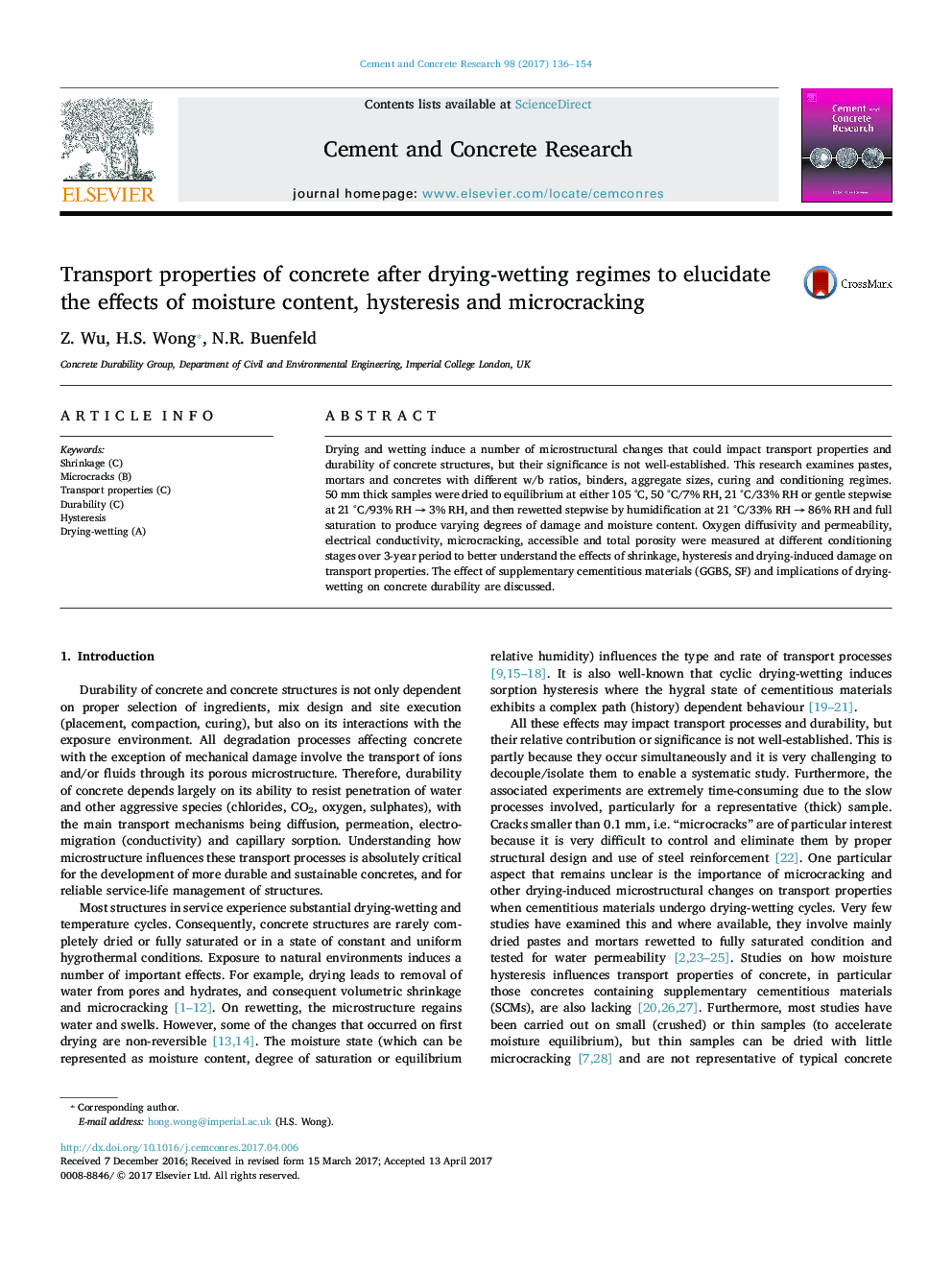| Article ID | Journal | Published Year | Pages | File Type |
|---|---|---|---|---|
| 5437095 | Cement and Concrete Research | 2017 | 19 Pages |
Abstract
Drying and wetting induce a number of microstructural changes that could impact transport properties and durability of concrete structures, but their significance is not well-established. This research examines pastes, mortars and concretes with different w/b ratios, binders, aggregate sizes, curing and conditioning regimes. 50 mm thick samples were dried to equilibrium at either 105 °C, 50 °C/7% RH, 21 °C/33% RH or gentle stepwise at 21 °C/93% RH â 3% RH, and then rewetted stepwise by humidification at 21 °C/33% RH â 86% RH and full saturation to produce varying degrees of damage and moisture content. Oxygen diffusivity and permeability, electrical conductivity, microcracking, accessible and total porosity were measured at different conditioning stages over 3-year period to better understand the effects of shrinkage, hysteresis and drying-induced damage on transport properties. The effect of supplementary cementitious materials (GGBS, SF) and implications of drying-wetting on concrete durability are discussed.
Related Topics
Physical Sciences and Engineering
Engineering
Industrial and Manufacturing Engineering
Authors
Z. Wu, H.S. Wong, N.R. Buenfeld,
